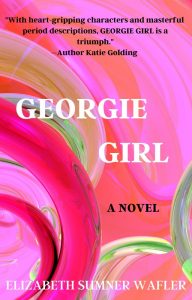How to be a Nose for Characters
 Near my home, a world-class vineyard and winery nestles into a pastoral valley limned by blue mountains. Yes, Virginia, more than fifty award-winning vineyards make the central part of our state a destination for oenophiles. At Keswick Vineyards, there’s a popular annual competition in which wine club members are invited into the “sacred” cellars. There, oenophile aka “nose” teams compete to create a blend labeled Consensus.
Near my home, a world-class vineyard and winery nestles into a pastoral valley limned by blue mountains. Yes, Virginia, more than fifty award-winning vineyards make the central part of our state a destination for oenophiles. At Keswick Vineyards, there’s a popular annual competition in which wine club members are invited into the “sacred” cellars. There, oenophile aka “nose” teams compete to create a blend labeled Consensus.
The Right Blend
Different varieties of grapes make wines more complex and maximize the expression of a bottle, as do the right blend of characters in our stories. As a little Merlot can help soften Cabernet’s tannins or a touch of Syrah can give some oomph to a cheap, watery Pinot, giving characters distinguishing traits make scenes interesting and robust, worth savoring, and with just the right finish.
In his (completely brilliant) craft book WRITING THE BREAKOUT NOVEL, agent Donald Maas says, “Character differentiation is the technique of making the characters in your cast different and distinct from one another. . . contrast is the key.”
Aim for contrast by focusing on personality, voice and worldview.
Personality
 Like sweetness and acidity in wine, characters need each other for balance. The good-guys need foils—black-hearted scoundrels—to highlight the good-guys’ shining knight personas. (While an antagonist acts in opposition to the MC, a foil simply provides a contrast.) Consider Cal and Aron in John Steinbeck’s East of Eden, a novel modeled after the Bible story of Adam and Eve and their sons Cain and Abel. Aaron is pale and delicate, the beloved son, while the murderous Cal is dark and secretive. Not only do the boys’ personalities provide contrast and complexity to the story, they affect the choices they make through the novel.
Like sweetness and acidity in wine, characters need each other for balance. The good-guys need foils—black-hearted scoundrels—to highlight the good-guys’ shining knight personas. (While an antagonist acts in opposition to the MC, a foil simply provides a contrast.) Consider Cal and Aron in John Steinbeck’s East of Eden, a novel modeled after the Bible story of Adam and Eve and their sons Cain and Abel. Aaron is pale and delicate, the beloved son, while the murderous Cal is dark and secretive. Not only do the boys’ personalities provide contrast and complexity to the story, they affect the choices they make through the novel.
Voice
A great wine speaks. Characters resonate with readers when they’re given accents, nicknames and quirk. A memorable scene in Susan Isaac’s novel RED, WHITE AND BLUE features a jumble of soldiers sharing a WWII foxhole. Issacs gives each man a different regional accent making the scene interesting, compelling, and hilarious. In F. Scott Fitzgerald’s THE GREAT GATSBY, Jay Gatsby nicknames Nick Caraway Old Sport, which implies that Nick desires and old-money lifestyle; he wants to play rich men’s games at the estates of East Egg, Long Island. Old Sport. How catchy is that? STAR WARS’ Yoda, the ancient Jedi Master, speaks his wise words using an object-subject-verb pattern. (Maybe that’s what everyone did 900 years ago.) Old style and direct it is. Quirky and exotic it is. And love the wrinkly little green badass we do.
Worldview
Oenophiles use the term “earthy” to describe wines delivering a sense of place and origin, from where the grapes are grown, even to the type of soil.
Great characters have complex root systems. We empathize with them—even the rascals—because we know where they came from and how their experiences have shaped their worldviews for better or worse. Even if opposing characters have similar desires or goals, it’s the origin of what drives them that matters. Contrasting worldviews make characters believable and relatable. Sharpen your shovel and dig deep. Give your characters deeply buried secrets and internal struggles that will trigger the decisions that drive your plot.
Just as Keswick Vineyard’s Consensus competition affords noses an inside view of what makes great wines work, allowing readers to see what makes our characters tick as individuals, makes for richer, fuller, and more satisfying reading experiences.
Cheers!
—
Elizabeth Sumner Wafler writes evocative women’s fiction and is represented by Pamela Harty of the Knight Agency. A member of the Women’s Fiction Writers Association, she serves as Director of Craft Education. She enjoys working with other writers through her editorial business Four Eyes Editorial. A yogi, she lives with her husband and cairn terrier in the Blue Ridge Mountains of Virginia, where she can be found at a farmers market in search of the perfect heirloom tomato, or at one of the area vineyards, enjoying a glass of Virginia wine.
Website: elizabethsumnerwafler.com
Twitter: https://twitter.com/ElizabethWafler
Instagram: #elizabethwaflerwrites
Four Eyes Editorial: https://elizabethsumnerwafler.com/editorial-services/

GEORGIE GIRL
Georgie Bricker is mortified by boys. Unfortunately, growing up in the seventies on the sleepy campus of Virginia’s Browning School for Boys with her faculty family means she is surrounded by a herd of them. Determined to focus on her path to college, she meets temptation personified when Truman Parker arrives for the fall term with eyes the blue of a peacock’s neck and a penchant for snappy salutes.
Georgie is smitten. But when she’s paired for a project with bad-boy Kelly in French class at the junior high they attend in town, a volatile love triangle develops, and her resolve disintegrates.Meanwhile, Georgie and her life-long best friend Lacey are stricken to discover their Camelot-like community at Browning rife with incongruity—from an adulterous faculty affair, to drug use, to a secret closet-cache of child pornography.
Tension escalates when desegregation descends on both Georgie’s school and the Browning campus. But that situation is compounded by the report of a missing young faculty child. Fourteen-year-old Georgie’s secrets could save the day but ultimately destroy a life. With Truman and Lacey by her side and time running out, can Georgie figure out what a woman would do in a scared girl’s situation before her relationship, her friends, and their families’ lives are forever altered?
Category: Contemporary Women Writers, How To and Tips
























